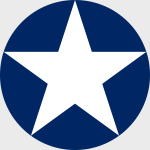Corgi AA33304 USAAF Boeing B-17E Flying Fortress Heavy Bomber - "Yankee Doodle", 414th Bombardment Squadron, 97th Bombardment Group, RAF Grafton Underwood, England, September 1942 (1:72 Scale)
"Why should we have a navy at all? There are no enemies for it to fight except apparently the Army Air Force."
- General Carl Spaatz, Commander of the US 8th Army Air Force, after WWII
 The B-17, arguably World War II's most famous heavy bomber, first flew on July 28th, 1935, before a crowd of reporters eager to see Boeing's new bomber take wing. It was dubbed the "Flying Fortress" by the members of the press in attendance because of its (at least for the time) heavy defensive armament. The prototype crashed in October, but because of its impressive speed and handling the US Army Air Corps (USAAC) decided to continue testing anyway. They ordered 13 YB-17s for further evaluation, a decision that would prove momentous in years to come.
The B-17, arguably World War II's most famous heavy bomber, first flew on July 28th, 1935, before a crowd of reporters eager to see Boeing's new bomber take wing. It was dubbed the "Flying Fortress" by the members of the press in attendance because of its (at least for the time) heavy defensive armament. The prototype crashed in October, but because of its impressive speed and handling the US Army Air Corps (USAAC) decided to continue testing anyway. They ordered 13 YB-17s for further evaluation, a decision that would prove momentous in years to come.
The YB-17 had five machine guns, room for 4,800 pounds of bombs and a crew of nine. It had electrically retractable landing gear. After testing the YB-17, an improved prototype, the Y1B-17, was built with Wright Cyclone radial engines. Twelve were delivered to the USAAC's 2nd Bombardment Group for trials. One of these was soon equipped with new Moss/General Electric turbochargers that became standard on all future Flying Fortresses. The first production order was for 39 B-17Bs with turbo-charged engines, and as soon as these were under production another order for the B-17C was placed, with seven machine guns instead of the original five.
The RAF received their first B-17Cs in 1941, and were soon conducting daylight raids over Germany. The defensive armament soon proved inadequate, and the B-17's altitude was little defense against the German fighters. Orders for the B-17D were soon placed with self-sealing fuel tanks and more armor because of lessons learned in bombing missions over Europe. The B-17E and B-17F soon followed with larger tail. The B-17F was the first to serve with the USAAF 8th Air Force. After suffering staggering losses in late 1943, analysis proved head-on attacks by enemy fighters were a distinct problem. The final major version, the B-17G, added a chin turret with dual machineguns. This gave the B-17 a defensive armament of 13 guns.
After the war, several dozen B-17s lived on as fire-bombers and aerial surveyors until the last one was retired in the 1970s. Today, a few B-17s have been restored to their wartime splendor. Ten are currently flying in the United States, one in the UK and another one in France. Features extremely high level of details including full crew, rotating gun turrets, working undercarriage, and bomb load.
This particular 1:72 scale replica of a B-17E Flying Fortress bomber, nicknamed "Yankee Doodle", was flown by the 414th Bombardment Squadron, 97th Bombardment Group, then located at RAF Grafton Underwood, England, during September 1942.
Sold Out!
Dimensions:
Wingspan: 17-1/2-inches
Length: 12-1/4-inches
Historical Account: "Yankee Doodle" - As WWII intensified, the bombers needed additional armament and armor. The B-17E, the first mass-produced model Flying Fortress, carried nine machine guns and a four thousand-pound bomb load. It was several tons heavier than the prototypes and bristled with armament.
Upon their arrival in the UK the US Army Air Force re-acquired several B-17Es built for the RAF and these still carried the Dark Earth/Dark Green & Pale Blue camouflage of the RAF. This B-17E took part in the first USAAF combat mission of the 8th Air Force daylight bombing offensive, an attack on the railway marshalling yards at Rouen, France, on August 17th, 1942. It remained based with 414 Squadron at Grafton Underwood in East Anglia until September 1942.


